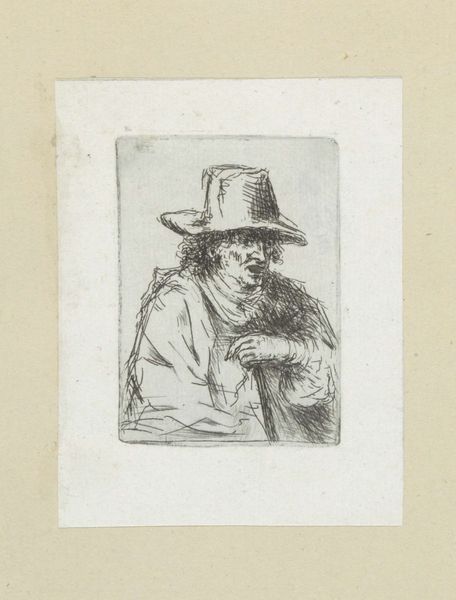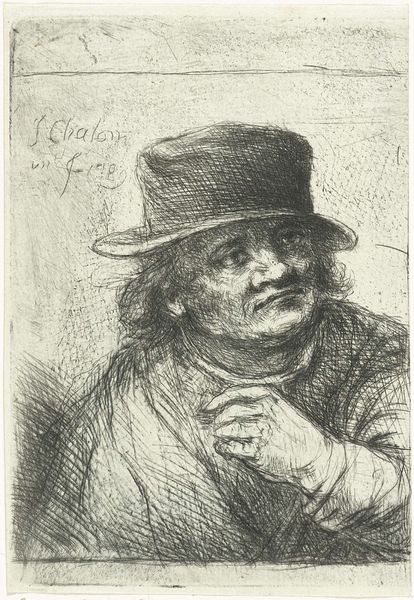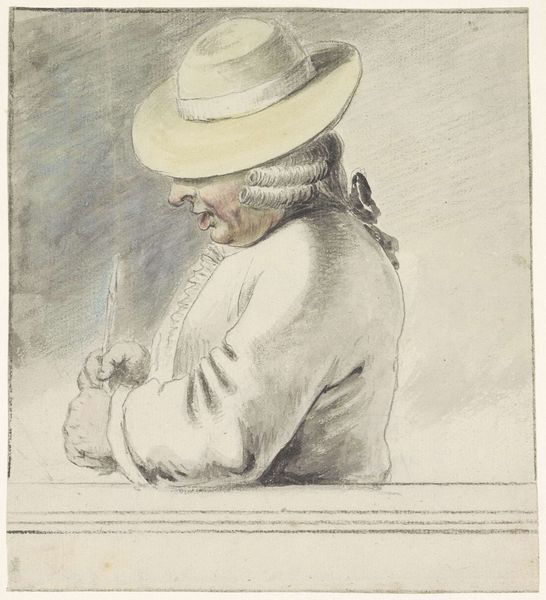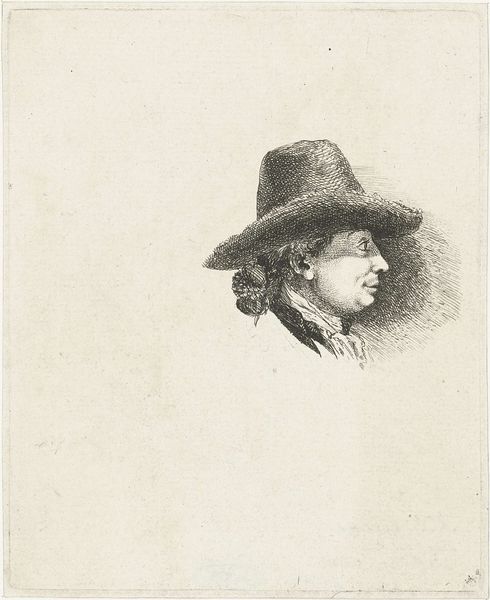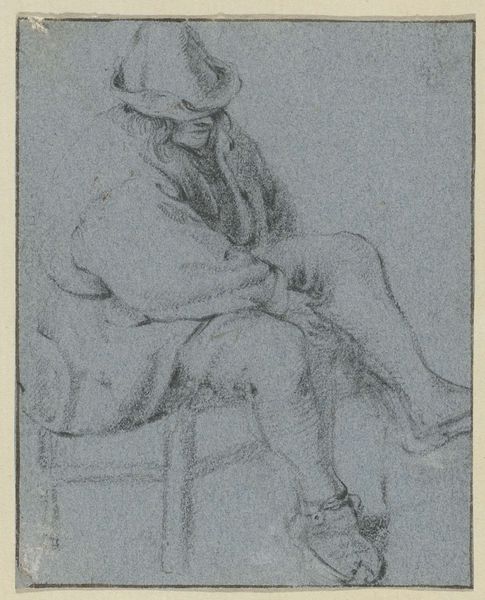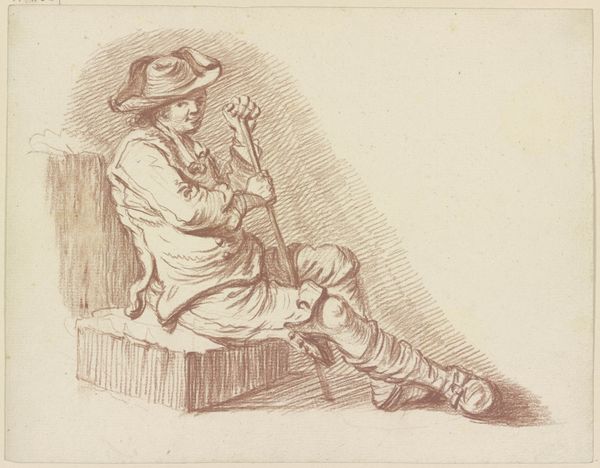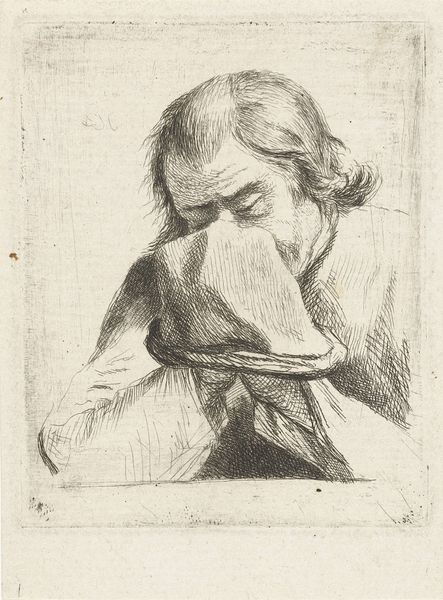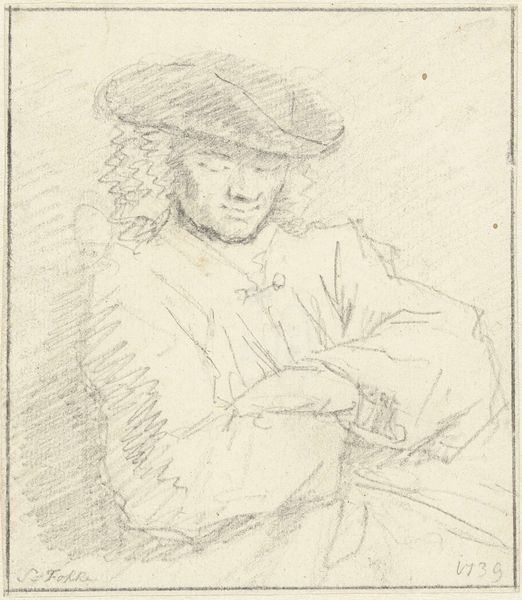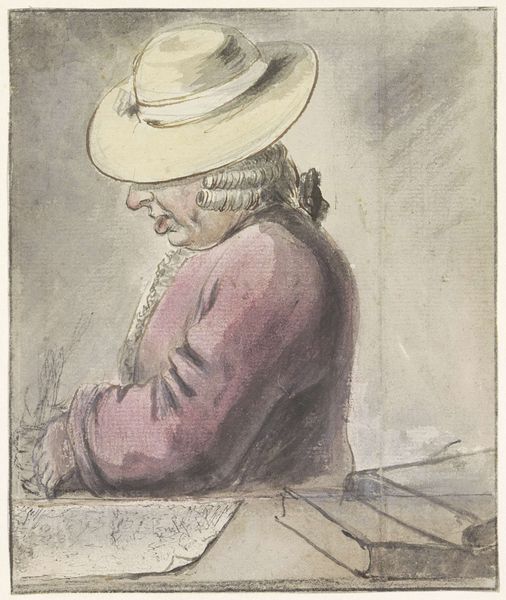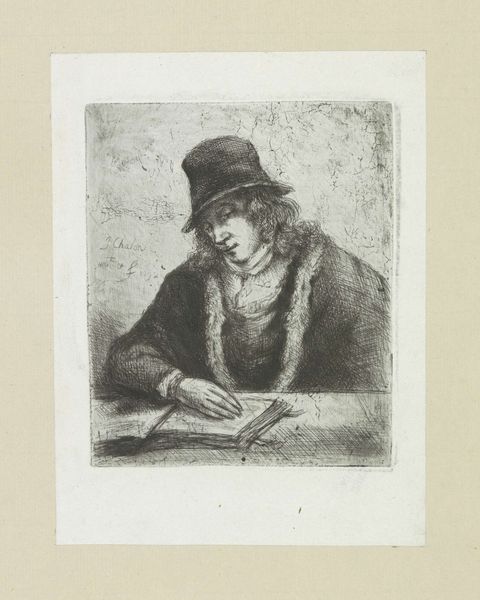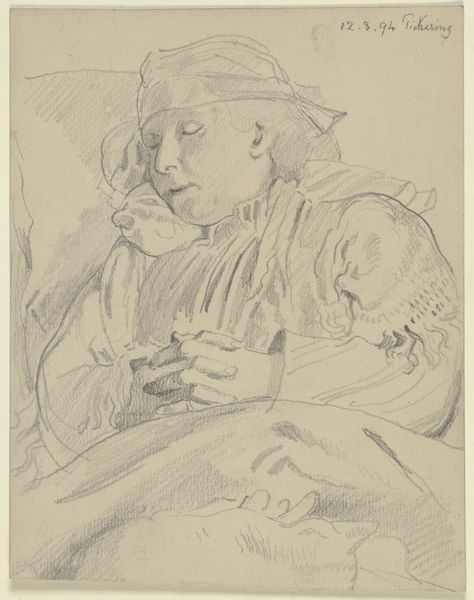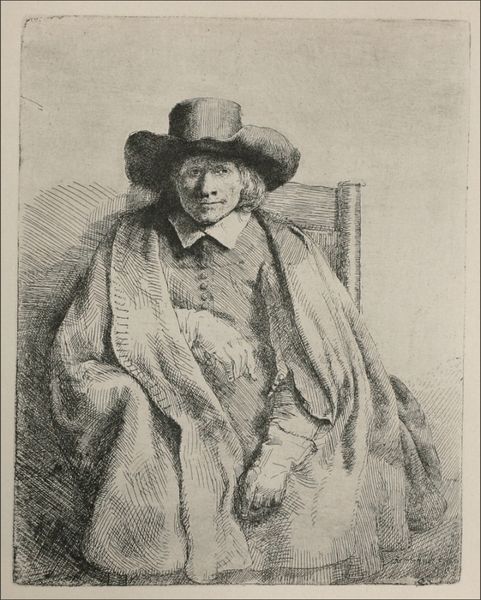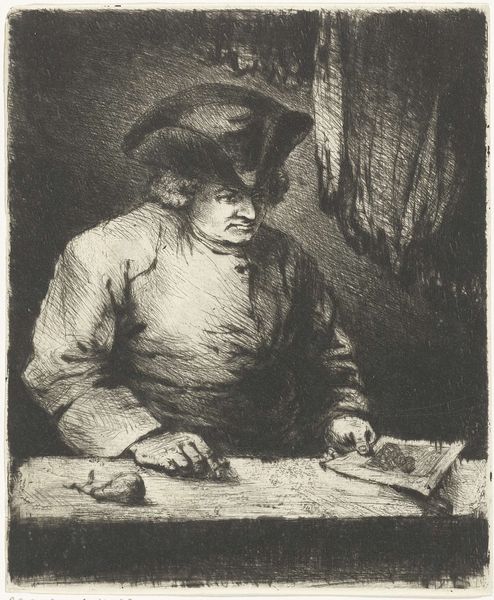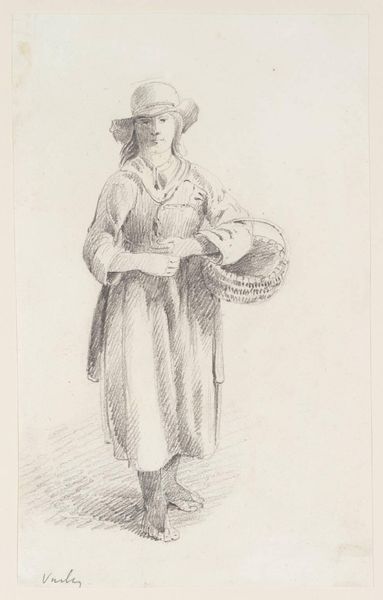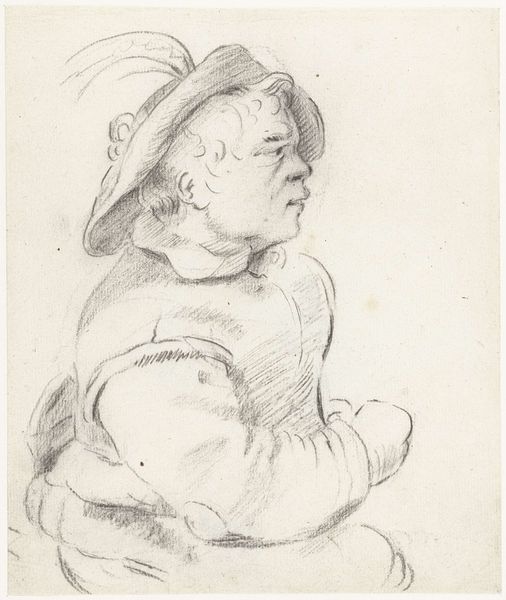
drawing, etching, pencil
#
portrait
#
drawing
#
etching
#
caricature
#
caricature
#
child
#
romanticism
#
pencil
#
portrait drawing
#
genre-painting
Dimensions: height 107 mm, width 123 mm
Copyright: Rijks Museum: Open Domain
Editor: This etching from around the early 1800s, "Slapende jongen met hoed" or "Sleeping Boy with Hat", by Ernst Willem Jan Bagelaar is so curious! He's completely out, but there's something almost unsettling about the size of that hat and the way he’s hunched over. What do you see in this piece? Curator: The hat is definitely a focal point, isn't it? It dwarfs the boy, perhaps symbolizing the burdens or aspirations of adulthood weighing down on youthful innocence. The "Sleeping Boy" is a powerful trope. In iconography, sleep is often seen not merely as rest, but as a state bordering on the prophetic, or even a brush with mortality. Do you find any clues about what weighs so heavily on the boy? Editor: Well, the hands clasped on the table seem like such a resigned pose, it makes you wonder about his life. Do you think there is a specific Dutch tradition or some cultural memory that we're supposed to bring to this image? Curator: Perhaps. Think about Dutch genre painting, famous for capturing scenes of everyday life, often with a moral undertone. Bagelaar seems to tap into this tradition, but with a twist of Romantic sensibility. The slightly exaggerated features place it somewhere between portraiture and caricature, doesn't it? The weight of dreams and perhaps societal expectations are already upon him. Editor: That's fascinating, how it pulls from different traditions. I never would have picked up on the caricature aspect on my own. Curator: Consider too, how sleep, even in a genre scene, allows for the surfacing of deeper anxieties and yearnings, made accessible through familiar, almost mundane imagery. Editor: That’s so true. Looking at it again, I can see how the piece uses the ordinary to hint at deeper, universal emotions. Thanks!
Comments
No comments
Be the first to comment and join the conversation on the ultimate creative platform.
